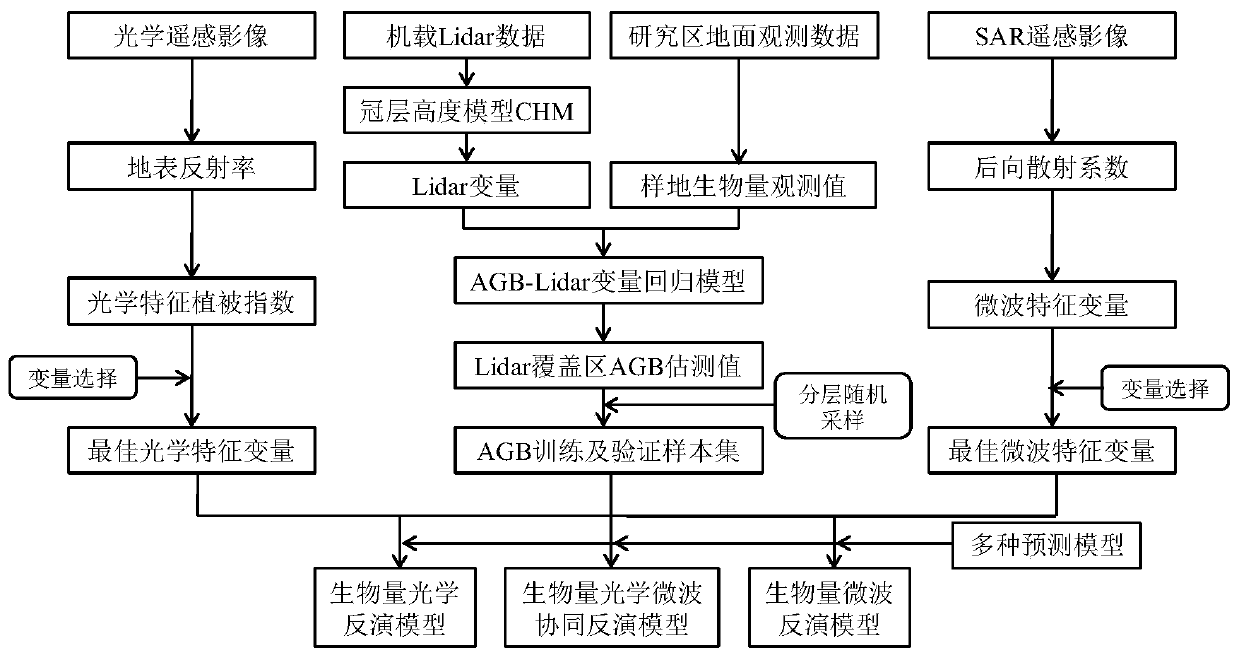Optical microwave cooperative inversion method and system for urban above-ground biomass
A biomass and microwave technology, applied in the field of inversion, can solve the problem of vegetation information response saturation and achieve the effect of improving the accuracy of quantitative inversion
- Summary
- Abstract
- Description
- Claims
- Application Information
AI Technical Summary
Problems solved by technology
Method used
Image
Examples
Embodiment Construction
[0045] The technical solutions of the present invention will be further described below in conjunction with the accompanying drawings and embodiments.
[0046]Different from previous inversion methods, the present invention first takes the measured AGB of the sample plot as the dependent variable, and the extracted LiDAR variable as the independent variable, establishes a multivariate stepwise linear regression model of biomass, and obtains the aboveground biomass value of the LiDAR data coverage area; and then The biomass value of the LiDAR data coverage area is used as the biomass training and verification sample set, and a certain number of samples are selected for subsequent modeling and verification using the method of stratified random sampling; finally, the variable screening method is used to screen out the best optical and Microwave characteristic variables, and the optimal optical variable, optimal microwave variable and the combination of the two are applied to vario...
PUM
 Login to View More
Login to View More Abstract
Description
Claims
Application Information
 Login to View More
Login to View More - R&D
- Intellectual Property
- Life Sciences
- Materials
- Tech Scout
- Unparalleled Data Quality
- Higher Quality Content
- 60% Fewer Hallucinations
Browse by: Latest US Patents, China's latest patents, Technical Efficacy Thesaurus, Application Domain, Technology Topic, Popular Technical Reports.
© 2025 PatSnap. All rights reserved.Legal|Privacy policy|Modern Slavery Act Transparency Statement|Sitemap|About US| Contact US: help@patsnap.com



